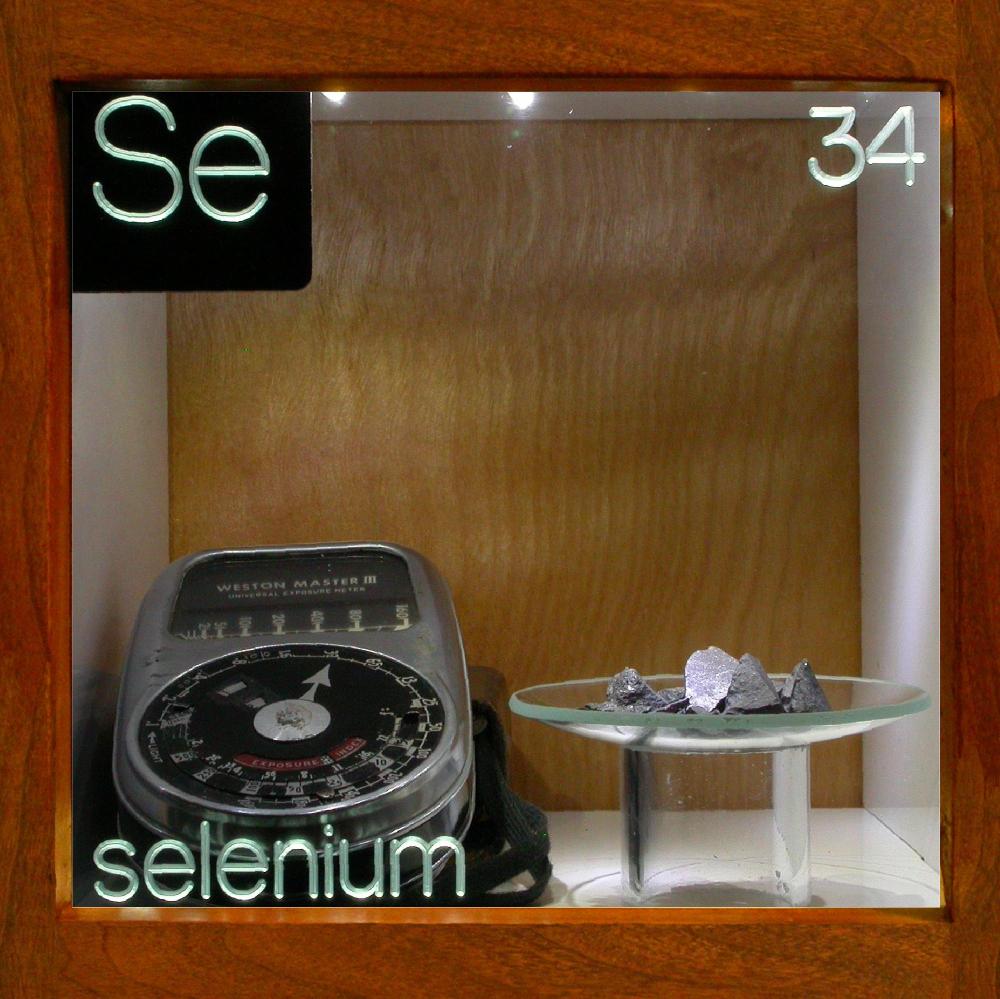Home Size: 1 2 3 4 5 6 7 8 9
|
 |
| A silvery semi-metal which also exists in the form of a powdery red allotrope. It is stable in air but will burn.
|
|
|
 |
Lumps.
This is the form in which selenium is generally available commercially. It is likely to have come from a delightful substance called anode slime which is the muck that accumulates in the electrolytic cells where copper is purified. This slime contains up to 5% selenium which, along with a number of other rarer elements, are present in the copper ore and concentrated by the electrolytic process.
Source: industrial supplier
Size: 0.75"
Purity: 99.9%
|
|
 |
Light meter.
Selenium is used to make light-sensing surfaces, including this self-powered light meter (the selenium surface generates electricity from light, which moves the meter to indicate the amount of light striking the surface). Selenium is also used on the surface of photocopier drums.
Source: eBay
Size: 4"
Purity: 99.9%
|
|
 |
Native selenium.
Selenium is rare as a native element. Like its neighbor sulfur, it forms around volcanic fumaroles, burning coal dumps and from the reduction of other minerals. Selenium forms acicular (needle-like) crystals, felt-like aggregates or tiny sub-millimeter crystals, appearing as dark bands, streaks or disseminated patches. Generally it is gray to reddish gray in color but needles of the red allotrope are also known.
Source: Mackay mineral collection
Size: 1"
Purity: >95%
|
|

